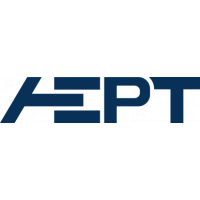Capacitively coupled micro atmospheric pressure plasma jets (µAPPJs)
are important tools for the generation of radicals at room temperature for various
applications. Voltage Waveform Tailoring (VWT), which is based on the simultaneous
use of a set of excitation frequencies, has been demonstrated to provide an efficient
control of the Electron Energy Probability Function (EEPF) in such plasmas and,
thus, allows optimizing the electron impact driven excitation and dissociation processes
as compared to the classical single-frequency operation mode. In this work, the
effects of changing the driving frequencies on the spatio-temporally resolved electron
power absorption dynamics, the generation of helium metastables and the dissociation
of nitrogen molecules are investigated in He/N2 plasmas based on experiments and
simulations. We find that under a single-frequency excitation, the plasma and helium
metastable densities are enhanced as a function of the driving frequency at a fixed
voltage. When using valleys-type driving voltage waveforms synthesized based on
consecutive harmonics of the fundamental driving frequency, the spatial symmetry of
the electron power absorption dynamics and of the metastable density profile is broken.
Increasing the fundamental frequency at a constant voltage is found to drastically
enhance the plasma and metastable densities, which is a consequence of the change
of the EEPF. Finally, we compare the energy efficiency of the formation of radicals
under single-frequency and VWT operation at different driving frequencies. For a
given power dissipated in the plasma, VWT yields a higher helium metastable as well
as electron density and a higher dissociation rate of N2.
| Field | Value |
|---|---|
| Publisher | |
| Authors | |
| Release Date | 2022-02-21 |
| Identifier | e03e57e8-48ce-4e10-bfd4-019e9235c0a2 |
| Permanent Identifier (URI) | |
| Is supplementing | |
| Plasma Source Name | |
| Plasma Source Application | |
| Plasma Source Specification | |
| Plasma Source Properties | COST-jet, consists of two identical and co-planar parallel electrodes made of stainless steel. The electrode gap is 1 mm. The electrodes are enclosed by two quartz plates confining the plasma volume to
1×1×30 mm3, the frequency and gas flow vary
Wide range of frequencies ranging from 6MHz to 28MHz with a varied ammount of applied harmonics (1-4)
The voltage is kept constant at 500 Vpp.
Gasflows of 1000 sccm He and 1 sccm N2 |
| Language | English |
| Plasma Source Procedure | The plasma is analysed via PROES and TDLAS |
| License | |
| Plasma Medium Name | |
| Plasma Medium Properties | The discharge is operated in helium (5.0 purity) with nitrogen (5.0 purity) admixture. The flow rate of helium is fixed at 1000 sccm while the nitrogen flow rate is fixed at 1 sccm. This flow rate of N2 corresponds to reactive gas concentration of 0.1% in the He buffer gas. The gas pressure inside the jet is estimated to be 1.02(±0.02)×10e+5 Pa. The temperature is roughly room temperature |
| Plasma Medium Procedure | The COST-Jet should be running for ~10min to ensure that heating effects do not influence the measurements. |
| Contact Name | Hübner, Gerrit |
| Plasma Target Properties | |
| Contact Email | |
| Plasma Diagnostic Properties | For PROES: Interference filter at 700 nm to monitor the 706,5 nm Helium emission Line
For TDLAS: Toptica, DL100 DFB |
| Public Access Level | Public |
| Plasma Diagnostic Name | |
| Funding Agency | |
| Project | |
| Subproject |
Data and Resources
- Fig 4. Sim. electron density and electric field in varied single frequencyzip
See attached Word file
Download - Fig 7. Sim. normalised EEPF for both varied single and multi frequencieszip
See attached Word file
Download


![[Open Data]](https://assets.okfn.org/images/ok_buttons/od_80x15_blue.png)